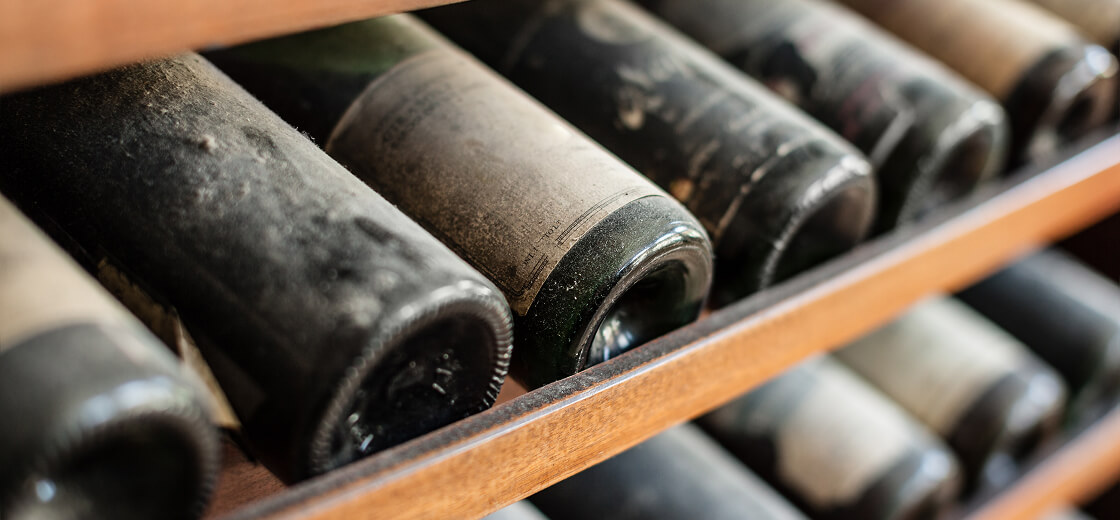Between Cellar and Capital
Wine as an investment for beginners and connoisseurs: How do you invest in wine? Which bottles offer potential? And what should wine lovers bear in mind if they want to turn their passion for fine wines into a financial investment?
Here’s our beginner’s guide for anyone who wants to get more out of their passion.
Why invest in wine at all?
How to invest in liquid luxury?

New ways to invest in liquid assets: digital co-investments
This type of participation is often referred to as a “wine-based real asset investment,” because it represents an investment in wine as a tangible asset, rather than in stocks or cryptocurrencies. It provides an easier entry into the world of luxury and prestigious wines. Investors can participate in a professionally managed wine portfolio with the aim of benefiting from future value growth – without having to worry about storage, insurance, or sales.
The Berghaus & Cie family office takes a slightly more traditional, yet equally exciting approach. With a focus on fine wines, rigorous market analysis, and personal advice, wine becomes a strategic component in long-term asset planning. Ideal for investors who see tangible assets not as a trend, but as a deliberate part of their overall strategy.
What is Timeless?
The Plattform:
Timeless is a digital investment platform that allows users to invest in exclusive tangible assets, including premium wines. Users purchase fractions (shares) of carefully selected wines, which are professionally stored and later offered for resale with the aim of benefiting from potential value appreciation.The model:
Wines are securely stored in certified high-security warehouses by qualified service providers. The platform manages administration, authentication, and provides the trading platform for the purchased shares. Investors can buy fractions of individual bottles or collections and have the option to resell them at a later stage.The advantage:
Investors benefit from the potential appreciation in value of certified collector’s bottles that would otherwise be out of reach – without the hassle of storage or the risk of counterfeiting. With entry starting at just €50, investors gain access to sought-after luxury wines and can continuously build their portfolio through savings plans or direct investments.Examples:
Current offerings include Château Lafite Rothschild, Screaming Eagle, and Dom Pérignon Luminous Editions.More about Timeless
To the WineChat
What makes a wine investable?
Reputation of the producer
Big names such as Château Lafite-Rothschild, Pétrus, Domaine de la Romanée-Conti, and Screaming Eagle are virtually guaranteed to appreciate in value. However, emerging winemakers with high demand and limited production are increasingly coming into focus as well.Vintage and quality
Legendary vintages such as 1982, 2000, or 2009 in Bordeaux are considered the ‘blue chips’ of the wine market. They are particularly established, stable, and reliable investments. Younger top vintages with good aging potential are also in demand.Limited availability
The fewer bottles in circulation – and the more that have already been consumed – the more sought-after the remaining stock becomes.Storability
A wine must be able to age. Red wines with strong tannins and complexity (e.g., Bordeaux, Barolo, Brunello, California Cabernet Sauvignon) have an advantage here.Condition & proof of origin
Only wines that have been stored properly, with intact labels, original packaging, and, if possible, verifiable provenance, achieve the highest prices.Which wines are particularly worthwhile?
To the limited edition wines
Protect against fraud and detect counterfeits
Tips for beginners – how to get started with wine investment
Set a goal
Do you want to collect with the aim of selling in 10 years? Or do you want to enjoy wine and keep a few bottles “in reserve” for later? Both approaches are valid – but define your strategy clearly.Start small – but stay focused
You don’t need to invest a five-figure sum right away. You can start building a small portfolio with as little as £500–£1,000 per year. Key point: quality over quantity.Stay informed
Keep up with market developments. Platforms such as Liv-ex, Wine-Searcher, or specialised auctions (e.g. Zachys, Sotheby’s, iDealwine) offer valuable insights into prices and trends.Ensure proper storage
Maintain constant temperatures (ideally 11–13 °C), around 70% humidity, no light sources, and no vibrations. Without proper storage, even the most expensive wines lose value. Alternatively, professional wine storage facilities can take care of everything.Focus on small regions with a strong reputation
Small but renowned regions such as Barolo (e.g. Giacomo Conterno), Rioja Alta (e.g. López de Heredia), or German Grand Crus from top wineries like Keller, Wittmann, and Dönnhoff are increasingly attracting collectors’ attention – offering stable, characterful alternatives to the big names.Know your sources
Only buy from reputable dealers or direct importers. When in doubt, it’s better to ask too many questions than too few.Investing with taste and a plan
Wine as an investment isn’t rocket science, but it shouldn’t be a gamble either. Those who approach it with intelligence, passion, and a taste for quality – focusing on established names with a strong track record, thinking long-term, and paying attention to condition and storage – can not only enjoy fine bottles but also achieve solid returns. Whether digital or traditional, individual or fractional, anyone looking to make modern wine investments today has a variety of approaches at their disposal. Perfect for those who don’t just drink wine, but also want to collect it strategically or include it as part of their asset portfolio.And the best part: unlike stocks or gold, you can always open the bottle if you want.